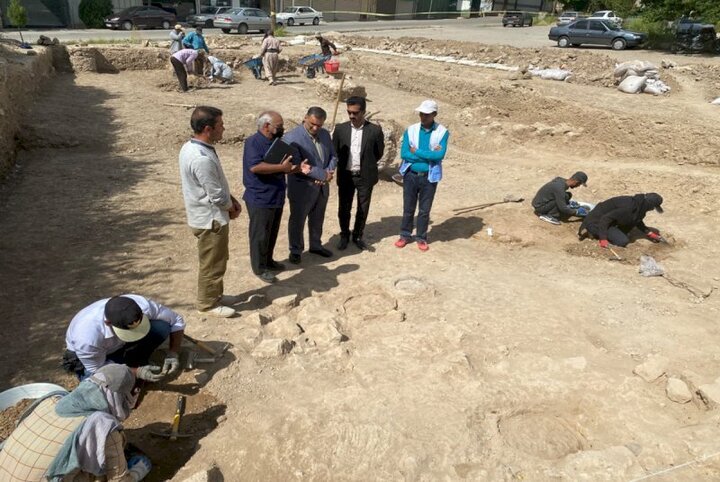New traces of ancient city revealed in western Iran

TEHRAN – A team of archaeologists has found new clues about an ancient city, which was prosperous during the Sassanid era, in western Iran.
Intact layers of the ancient city of Shapurkhast have been revealed in an archaeological project started in April, Lorestan province’s tourism chief said on Thursday.
“Also, during this period, several tombstones and disintegrated remains of human corpses from an old cemetery and some home ovens have been unearthed,” Ata Hassanpur said.
Types of settlements and land usage in the region, as well as its relationship with the architecture of earlier epochs, are among other goals that the project pursues, the official said.
It seems that Shapurkhast was abandoned in a time between the 13th and 14th centuries CE and modern Khorramabad began to function as the central town of the region, according to a survey conducted by Iranian archaeologist Mahtab Eslaminasab, Behrouz Afkham and Habib Shabazishiran.
According to the historical sources (the 10th to 14th century CE), there has been an ancient city named Shapurkhast in the west of Iran, which its history dates back to the Sasanian era. In these sources, the city has constructed by the Sassanid king Shapur I (240-272 CE). Life in the city continued during the Islamic period until the 14th CE. The city reached its peak in the 11th century CE.
The remnants of the old city were founded in the southeastern parts of the modern city of Khorramabad, especially from the excavations in 2007. Environmental and ecological conditions are the most important factors for the collapse of the city.
Moreover, Shapurkhast was one of the most important cities of the region during the Islamic era, which dates back to the pre-Islamic period, and may have been constructed before the Sassanid period and the roots of its formation should be searched in the Parthian period.
The Sassanid era is of very high significance in the history of Iran. Under Sassanids, various arts and architecture experienced a general renaissance.
The palaces at Ctesiphon, Firuzabad, and Sarvestan are examples of grandiose architecture that frequently adopted oversized proportions in that epoch.
Metalworking and gem engraving were two examples of highly developed crafts. Books were translated into Pahlavi, the Sassanian language, during that period from both the East and the West.
Top examples of Sassanian art can be found at Bishapur, Naqsh-e Rostam and Naqsh-e Rajab in southern Iran. Rock-carved sculptures and bas-reliefs on abrupt limestone cliffs are widely regarded as characteristics and striking relics of Sassanian art.
Moreover, Sassanids' efforts also resulted in a resurgence of Iranian nationalism; for instance, Zoroastrianism was proclaimed the state religion.
In the years 637 to 651, Arab invaders overthrew the dynasty that Ardashir I helped create. The dynasty was given its name in honor of Ardashir I's ancestor Sasan.
The Sassanid archaeological landscape shows how the earliest cultural centers of the Sassanid civilization were built using an extremely effective system of land use and careful consideration of the local topography.
AFM
Leave a Comment